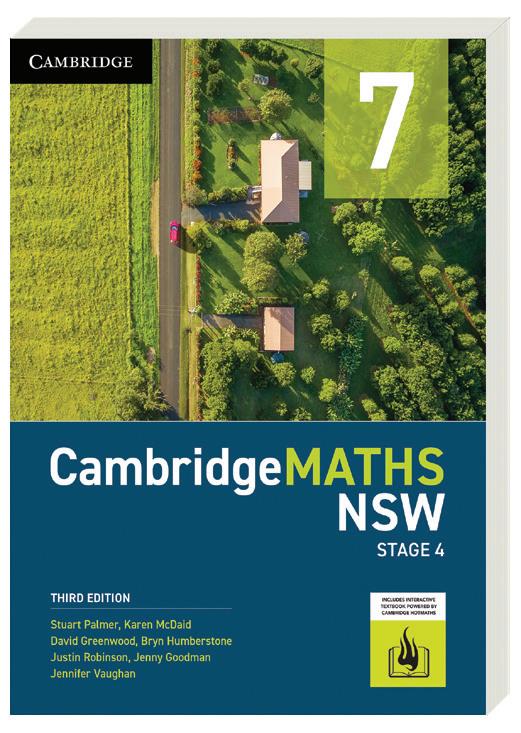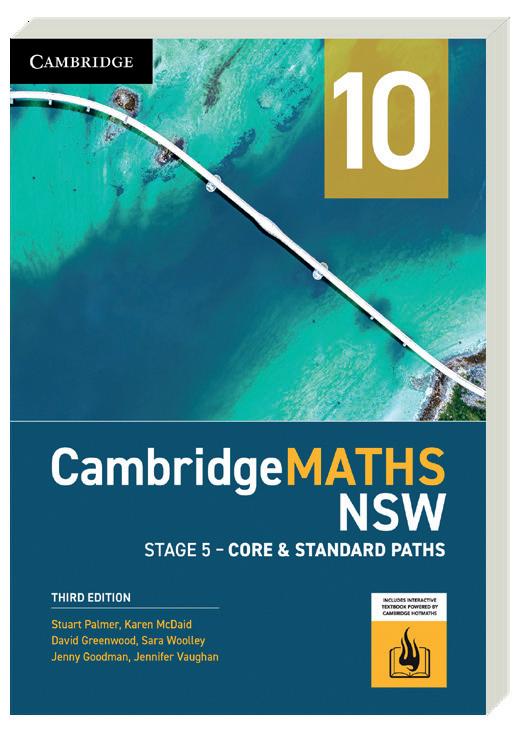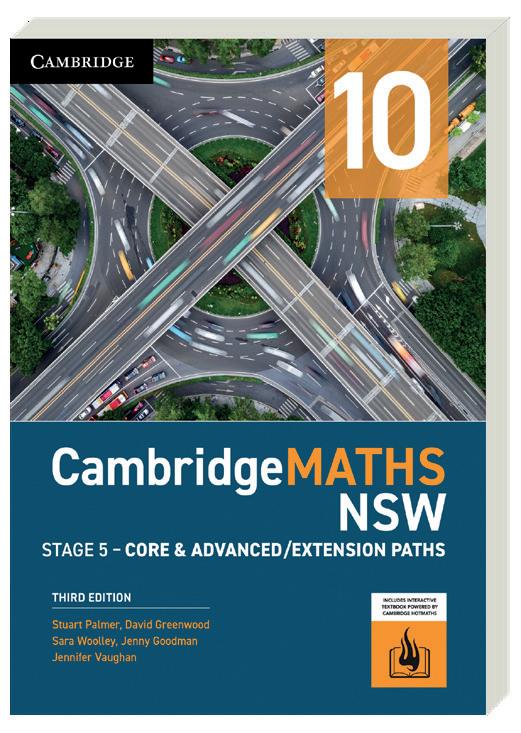ISBN 978-1-009-40891-2






All non-core topics are marked as CONSOLIDATING or EXTENDING to assist with differentiation and course planning.
About these annotated sample pages:
These sample pages include selected pages from (Year 7) Chapter 2: Number properties and patterns to demonstrate both the new and already highlyregarded features of CambridgeMATHS NSW 7-10 Third Edition, together with a provisional table of contents.
For more information about CambridgeMATHS NSW 7-10 Third Edition contact your Education Resource Consultant or visit: cambridge.edu.au/cambridgeMATHSNSW7-10

Chapter introductions set context for students about how the topic connects with the real world and the history of mathematics.

NSW Syllabus Outcomes are listed at the start of each chapter (see also the teaching program for more syllabus information).

(NEW) Learning intentions set out what a student will be expected to learn in the lesson.
(NEW) Past, present and future learning places the lesson in the context of the syllabus, highlighting topics that build on previous learning, and topics that will be extended at a later stage.
Lesson starter: an activity to start the lesson that can often be completed in groups.

Key ideas summarise the knowledge and skills for the lesson.
(NEW) Building understanding: questions to promote class discussion and consolidate skills before students attempt the exercise questions. Understanding questions are in the exercise sets in the Stage 5 Core & Standard Paths books.

Worked examples: solutions and explanations of each line of working, along with a description that clearly describes the mathematics covered by the example.
(NEW) Now you try questions after every worked example give students immediate practice at the same type of question before they start the exercise. Teachers can also use these to demonstrate a question in the same style as the worked examples.

Video demonstrations in the Interactive Textbook for all worked examples support both in-class learning and independent learning.
Links to worked examples are included within each exercise for easy reference. Note: In Stage 5 Core & Standard Paths, the worked examples are placed within each exercise to support less advanced students.
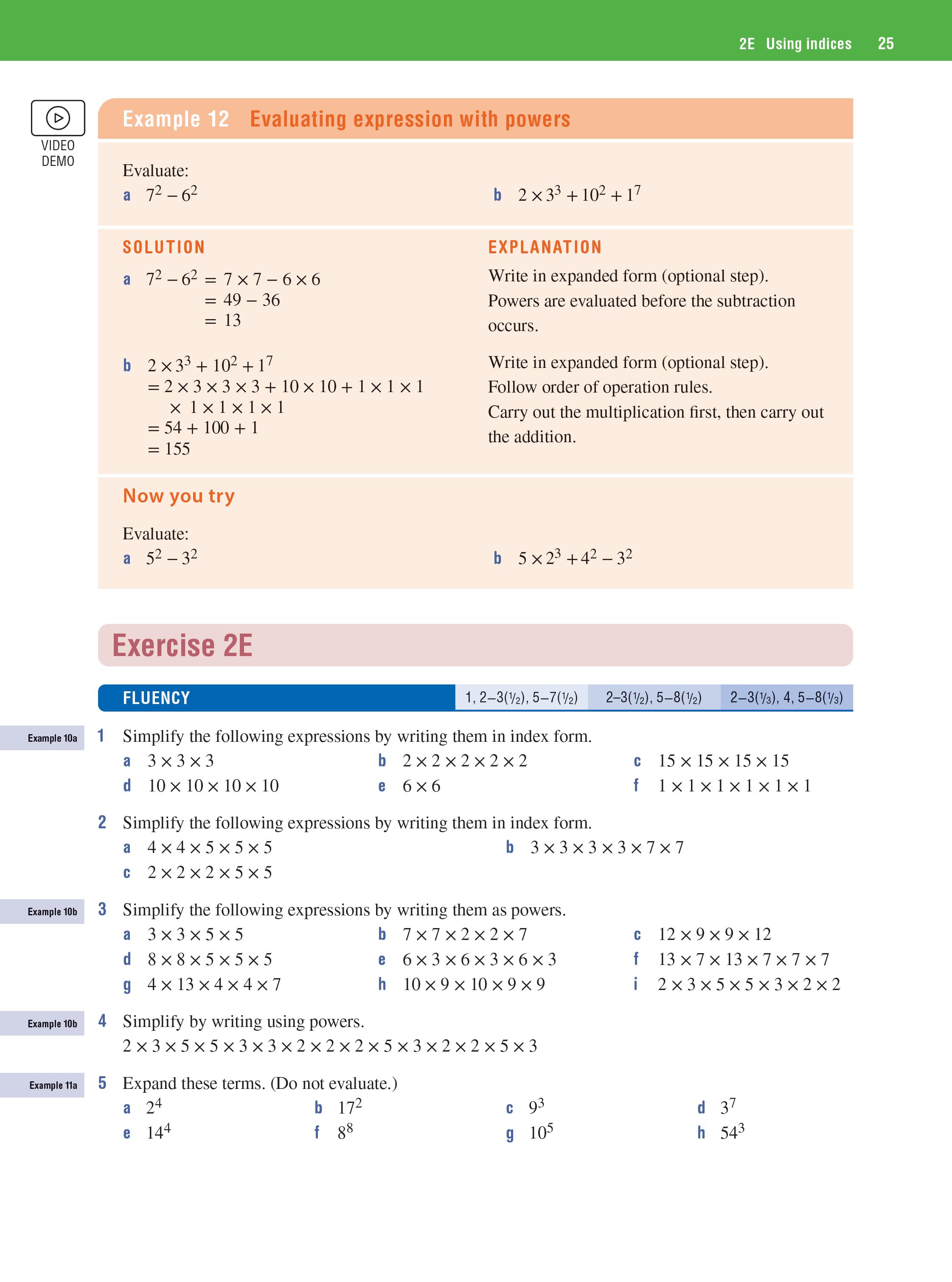
Revised exercise structure: the exercise begins at Fluency, with the first question always linked to the first worked example of the lesson.

Gradients within exercises and Working Mathematically components: the working programs make use of the gradients that have been seamlessly integrated into the exercises in both the overall structure of each exercise and within each Working Mathematically component.

Working programs: three suggested working programs provide pathways through each book to support differentiation.
Building: left column
Progressing: middle column
Mastering: right column
Stage 5 Core & Standard Paths offers two working programs: Building and Progressing.
Enrichment questions at the end of each exercise challenge high-achieving students to generalise and to think creatively. These questions provide a taste of the mathematics they will see in future studies and deepen their understanding of mathematics within a lesson rather than accelerating them to different lessons.

Progress quiz appears two thirds of the way through a chapter to ensure students are on track for successful understanding of the topic.

(NEW) Applications and problem solving: a set of graded and scaffolded extended-response questions allow students to investigate practical applications of the knowledge and skills developed throughout the chapter.

These Applications and problem solving questions (positioned about three-quarters of the way through the chapter) can be completed before the final topic assessment is taken, providing important practice before the topic has ended.
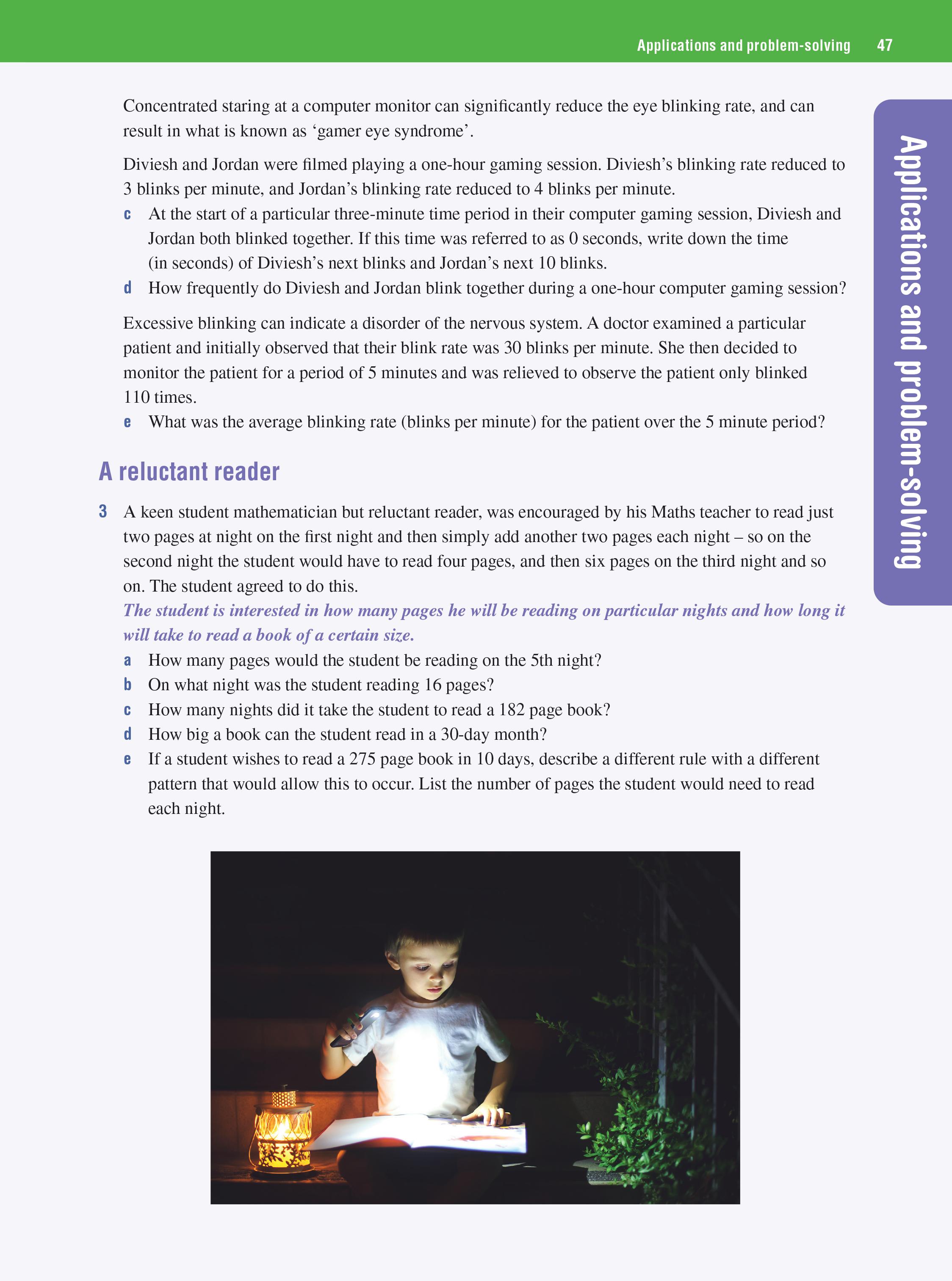
(NEW) Working Mathematically investigative tasks in every chapter provide opportunities for students to apply learning through answering routine problems and non-routine problems.

Engaging inquiry-based Investigations draw on real-world scenarios.

Problems and challenges provide practice with solving problems connected with the topic.

Chapter summary: a key point summary for revision and quick reference.


(NEW) Success Criteria checklist linked to the learning intentions with short example questions help students keep track of their progress through the chapter and support revision.


Chapter reviews: short-answer, multiple-choice and extendedresponse questions to revise and consolidate the topic.

Chapter review questions are clearly linked to the relevant chapter section to support revision.




